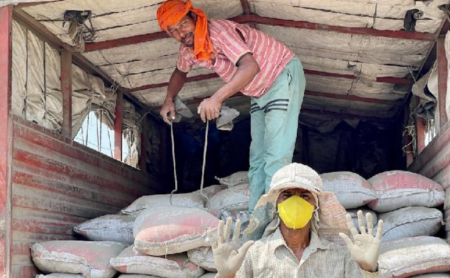Dr. Vandana Singh and Anil Mantri unpack how digitalisation and strategic multimodal planning are redefining air cargo and logistics resilience amid black swan events, from AI-driven rerouting to Red Sea disruption response.

Digital twins and AI tools are reshaping multimodal cargo response
When unpredictability becomes the new normal, logistics must adapt, not react. And that’s exactly where voices like Dr. Vandana Singh, Chairperson, Aviation Cargo at the Federation of Aviation Industry in India, and Anil Mantri, CEO & MD of Aarkesh Logistics, bring depth and direction to today’s evolving supply chain landscape.
Digital backbone of agility
Dr. Vandana Singh outlines a decisive shift in the logistics paradigm: from reactive response to anticipatory intelligence. “Digital platforms have become the nerve center of responsive logistics,” she says. Cloud systems, powered by AI and IoT, enable real-time tracking not only of air cargo but also of integrated modes like road and rail. Whether the disruption stems from weather, political unrest, or airport bottlenecks, these platforms evaluate alternate routes instantly. She also highlights the emergence of digital twins and dynamic dashboards that simulate and stress-test scenarios. minimising supply chain hiccups through proactive decision-making.
Predictive precision
In an era driven by uncertainty, forecasting becomes a competitive advantage. Dr. Singh explains how aviation and multimodal logistics are increasingly leaning into AI-enabled risk engines and predictive analytics. These tools process vast data sets, from satellite weather to port congestion, offering early alerts that help avoid crises before they strike. “Sensor-based cargo monitoring,” she adds, “feeds real-time data into AI platforms that adapt logistics routes on the fly,” ensuring perishable goods meet timelines and service-level agreements. It’s a move toward what she calls anticipatory logistics, a model that doesn’t just adapt but stays ahead.
The multimodal edge
The pandemic taught the industry an important lesson: resilience lies in integration, not isolation. During COVID-19, when passenger flights were grounded, multimodal setups enabled cargo to reroute via chartered freighters, trains, and trucks. “The agility built into multimodal systems makes them inherently better at absorbing black swan shocks,” Dr. Singh says. Initiatives like PM Gati Shakti have further strengthened this framework in India, blending physical and digital infrastructure to enable mode shifts in real time.
Ground reality: Red Sea crisis

Alternate routing, tracking, and partnerships now define disruption preparedness
Taking us from strategy to execution, Anil Mantri shares his front-line view. “The Red Sea crisis earlier this year caused massive rerouting and delays,” he recalls. Geopolitical tensions disrupted sea lanes, forcing vessels around the Cape of Good Hope, which in turn hampered inland connectivity across three continents. “Even tech couldn’t outmatch the scale of disruption,” he admits, highlighting the critical need for ground-level flexibility.
Resilience in action
Mantri describes how operators responded by rerouting urgent cargo via airfreight and recalibrating inland routes through alternate ports. “It all came down to real-time coordination between shippers, customs, and carriers,” he explains. As for contingency planning, he outlines a four-pillar approach: alternate routing, diversified carrier ties, digitised tracking, and warehousing flexibility. The wildcard? “Geopolitical analysis has become non-negotiable,” he adds.
Together, Singh and Mantri paint a compelling picture of modern logistics, one where digital prowess and multimodal planning aren’t just enablers; they’re lifelines.











